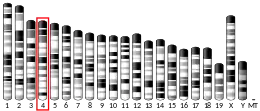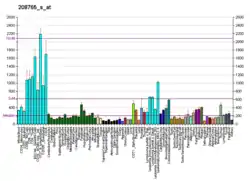| HNRNPR | |||||||||||||||||||||||||||||||||||||||||||||||||||
|---|---|---|---|---|---|---|---|---|---|---|---|---|---|---|---|---|---|---|---|---|---|---|---|---|---|---|---|---|---|---|---|---|---|---|---|---|---|---|---|---|---|---|---|---|---|---|---|---|---|---|---|
| |||||||||||||||||||||||||||||||||||||||||||||||||||
| Identifiers | |||||||||||||||||||||||||||||||||||||||||||||||||||
| Aliases | HNRNPR, HNRPR, hnRNP-R, heterogeneous nuclear ribonucleoprotein R | ||||||||||||||||||||||||||||||||||||||||||||||||||
| External IDs | OMIM: 607201 MGI: 1891692 HomoloGene: 4251 GeneCards: HNRNPR | ||||||||||||||||||||||||||||||||||||||||||||||||||
| |||||||||||||||||||||||||||||||||||||||||||||||||||
| |||||||||||||||||||||||||||||||||||||||||||||||||||
| |||||||||||||||||||||||||||||||||||||||||||||||||||
| |||||||||||||||||||||||||||||||||||||||||||||||||||
| |||||||||||||||||||||||||||||||||||||||||||||||||||
| Wikidata | |||||||||||||||||||||||||||||||||||||||||||||||||||
| |||||||||||||||||||||||||||||||||||||||||||||||||||
Heterogeneous nuclear ribonucleoprotein R is a protein that in humans is encoded by the HNRNPR gene.[5][6]
Function
This gene belongs to the subfamily of ubiquitously expressed heterogeneous nuclear ribonucleoproteins (hnRNPs). The hnRNPs are RNA-binding proteins and they complex with heterogeneous nuclear RNA (hnRNA). These proteins are associated with pre-mRNAs in the nucleus and appear to influence pre-mRNA processing and other aspects of mRNA metabolism and transport. While all of the hnRNPs are present in the nucleus, some seem to shuttle between the nucleus and the cytoplasm. The hnRNP proteins have distinct nucleic acid binding properties. The protein encoded by this gene has three repeats of RRM domains that bind to RNAs and also contains a nuclear localization motif.[6]
HNRNPR, together with its main RNA interacting partner, 7SK, is essential for axon growth in motoneurons.[7] Depletion of HNRNPR from primary motoneurons inhibits axonal development, but it does not lead to enhanced loss of motor neurons.[7] It also plays an important role in axonal β-actin mRNA translocation, binding directly to the 3'-UTR of β-actin mRNA.[8]
HNRNPR enhances c-fos transcription in vitro by forming a complex with PC4 and Mediator cofactors.[9]
Interactions
HNRNPR has been shown to interact with SMN1,[10][11] PRMT1,[12][13] TDP-43,[14] and FUS/TLS.[14]
References
- 1 2 3 ENSG00000125944 GRCh38: Ensembl release 89: ENSG00000282958, ENSG00000125944 - Ensembl, May 2017
- 1 2 3 GRCm38: Ensembl release 89: ENSMUSG00000066037 - Ensembl, May 2017
- ↑ "Human PubMed Reference:". National Center for Biotechnology Information, U.S. National Library of Medicine.
- ↑ "Mouse PubMed Reference:". National Center for Biotechnology Information, U.S. National Library of Medicine.
- ↑ Hassfeld W, Chan EK, Mathison DA, Portman D, Dreyfuss G, Steiner G, Tan EM (January 1998). "Molecular definition of heterogeneous nuclear ribonucleoprotein R (hnRNP R) using autoimmune antibody: immunological relationship with hnRNP P". Nucleic Acids Research. 26 (2): 439–45. doi:10.1093/nar/26.2.439. PMC 147279. PMID 9421497.
- 1 2 "Entrez Gene: HNRPR heterogeneous nuclear ribonucleoprotein R".
- 1 2 Briese M, Saal-Bauernschubert L, Ji C, Moradi M, Ghanawi H, Uhl M, Appenzeller S, Backofen R, Sendtner M (March 2018). "hnRNP R and its main interactor, the noncoding RNA 7SK, coregulate the axonal transcriptome of motoneurons". Proceedings of the National Academy of Sciences of the United States of America. 115 (12): E2859-68. Bibcode:2018PNAS..115E2859B. doi:10.1073/pnas.1721670115. ISSN 1091-6490. PMC 5866599. PMID 29507242.
- ↑ Glinka M, Herrmann T, Funk N, Havlicek S, Rossoll W, Winkler C, Sendtner M (2010). "The heterogeneous nuclear ribonucleoprotein-R is necessary for axonal beta-actin mRNA translocation in spinal motor neurons". Human Molecular Genetics. 19 (10): 1951–66. doi:10.1093/hmg/ddq073. ISSN 1460-2083. PMID 20167579.
- ↑ Fukuda A, Nakadai T, Shimada M, Hisatake K (2009). "Heterogeneous nuclear ribonucleoprotein R enhances transcription from the naturally configured c-fos promoter in vitro". Journal of Biological Chemistry. 284 (35): 23472–80. doi:10.1074/jbc.M109.013656. PMC 2749121. PMID 19581295.
- ↑ Mourelatos Z, Abel L, Yong J, Kataoka N, Dreyfuss G (October 2001). "SMN interacts with a novel family of hnRNP and spliceosomal proteins". The EMBO Journal. 20 (19): 5443–52. doi:10.1093/emboj/20.19.5443. PMC 125643. PMID 11574476.
- ↑ Rossoll W, Kröning AK, Ohndorf UM, Steegborn C, Jablonka S, Sendtner M (January 2002). "Specific interaction of Smn, the spinal muscular atrophy determining gene product, with hnRNP-R and gry-rbp/hnRNP-Q: a role for Smn in RNA processing in motor axons?". Human Molecular Genetics. 11 (1): 93–105. doi:10.1093/hmg/11.1.93. PMID 11773003.
- ↑ Wada K, Inoue K, Hagiwara M (August 2002). "Identification of methylated proteins by protein arginine N-methyltransferase 1, PRMT1, with a new expression cloning strategy". Biochimica et Biophysica Acta (BBA) - Molecular Cell Research. 1591 (1–3): 1–10. doi:10.1016/S0167-4889(02)00202-1. PMID 12183049.
- ↑ Stelzl U, Worm U, Lalowski M, Haenig C, Brembeck FH, Goehler H, Stroedicke M, Zenkner M, Schoenherr A, Koeppen S, Timm J, Mintzlaff S, Abraham C, Bock N, Kietzmann S, Goedde A, Toksöz E, Droege A, Krobitsch S, Korn B, Birchmeier W, Lehrach H, Wanker EE (September 2005). "A human protein-protein interaction network: a resource for annotating the proteome". Cell. 122 (6): 957–68. doi:10.1016/j.cell.2005.08.029. hdl:11858/00-001M-0000-0010-8592-0. PMID 16169070. S2CID 8235923.
- 1 2 Ling SC, Albuquerque CP, Han JS, Lagier-Tourenne C, Tokunaga S, Zhou H, Cleveland DW (July 2010). "ALS-associated mutations in TDP-43 increase its stability and promote TDP-43 complexes with FUS/TLS". Proceedings of the National Academy of Sciences of the United States of America. 107 (30): 13318–23. Bibcode:2010PNAS..10713318L. doi:10.1073/pnas.1008227107. PMC 2922163. PMID 20624952.
Further reading
- Mourelatos Z, Abel L, Yong J, Kataoka N, Dreyfuss G (October 2001). "SMN interacts with a novel family of hnRNP and spliceosomal proteins". The EMBO Journal. 20 (19): 5443–52. doi:10.1093/emboj/20.19.5443. PMC 125643. PMID 11574476.
- Rossoll W, Kröning AK, Ohndorf UM, Steegborn C, Jablonka S, Sendtner M (January 2002). "Specific interaction of Smn, the spinal muscular atrophy determining gene product, with hnRNP-R and gry-rbp/hnRNP-Q: a role for Smn in RNA processing in motor axons?". Human Molecular Genetics. 11 (1): 93–105. doi:10.1093/hmg/11.1.93. PMID 11773003.
- Jurica MS, Licklider LJ, Gygi SR, Grigorieff N, Moore MJ (April 2002). "Purification and characterization of native spliceosomes suitable for three-dimensional structural analysis". RNA. 8 (4): 426–39. doi:10.1017/S1355838202021088. PMC 1370266. PMID 11991638.
- Wada K, Inoue K, Hagiwara M (August 2002). "Identification of methylated proteins by protein arginine N-methyltransferase 1, PRMT1, with a new expression cloning strategy". Biochimica et Biophysica Acta (BBA) - Molecular Cell Research. 1591 (1–3): 1–10. doi:10.1016/S0167-4889(02)00202-1. PMID 12183049.
- Angenstein F, Evans AM, Settlage RE, Moran ST, Ling SC, Klintsova AY, Shabanowitz J, Hunt DF, Greenough WT (October 2002). "A receptor for activated C kinase is part of messenger ribonucleoprotein complexes associated with polyA-mRNAs in neurons". The Journal of Neuroscience. 22 (20): 8827–37. doi:10.1523/jneurosci.22-20-08827.2002. PMC 6757688. PMID 12388589.
- Hassel S, Eichner A, Yakymovych M, Hellman U, Knaus P, Souchelnytskyi S (May 2004). "Proteins associated with type II bone morphogenetic protein receptor (BMPR-II) and identified by two-dimensional gel electrophoresis and mass spectrometry". Proteomics. 4 (5): 1346–58. doi:10.1002/pmic.200300770. PMID 15188402. S2CID 6773754.
- Andersen JS, Lam YW, Leung AK, Ong SE, Lyon CE, Lamond AI, Mann M (January 2005). "Nucleolar proteome dynamics". Nature. 433 (7021): 77–83. Bibcode:2005Natur.433...77A. doi:10.1038/nature03207. PMID 15635413. S2CID 4344740.
- Huang J, Chen XH, Wu K, Xu P (May 2005). "Cloning and expression of a novel isoform of heterogeneous nuclear ribonucleoprotein-R". NeuroReport. 16 (7): 727–30. doi:10.1097/00001756-200505120-00014. PMID 15858414. S2CID 42006801.
- Kimura K, Wakamatsu A, Suzuki Y, Ota T, Nishikawa T, Yamashita R, Yamamoto J, Sekine M, Tsuritani K, Wakaguri H, Ishii S, Sugiyama T, Saito K, Isono Y, Irie R, Kushida N, Yoneyama T, Otsuka R, Kanda K, Yokoi T, Kondo H, Wagatsuma M, Murakawa K, Ishida S, Ishibashi T, Takahashi-Fujii A, Tanase T, Nagai K, Kikuchi H, Nakai K, Isogai T, Sugano S (January 2006). "Diversification of transcriptional modulation: large-scale identification and characterization of putative alternative promoters of human genes". Genome Research. 16 (1): 55–65. doi:10.1101/gr.4039406. PMC 1356129. PMID 16344560.
- Ewing RM, Chu P, Elisma F, Li H, Taylor P, Climie S, McBroom-Cerajewski L, Robinson MD, O'Connor L, Li M, Taylor R, Dharsee M, Ho Y, Heilbut A, Moore L, Zhang S, Ornatsky O, Bukhman YV, Ethier M, Sheng Y, Vasilescu J, Abu-Farha M, Lambert JP, Duewel HS, Stewart II, Kuehl B, Hogue K, Colwill K, Gladwish K, Muskat B, Kinach R, Adams SL, Moran MF, Morin GB, Topaloglou T, Figeys D (2007). "Large-scale mapping of human protein-protein interactions by mass spectrometry". Molecular Systems Biology. 3 (1): 89. doi:10.1038/msb4100134. PMC 1847948. PMID 17353931.
- Szafranski K, Schindler S, Taudien S, Hiller M, Huse K, Jahn N, Schreiber S, Backofen R, Platzer M (2007). "Violating the splicing rules: TG dinucleotides function as alternative 3' splice sites in U2-dependent introns". Genome Biology. 8 (8): R154. doi:10.1186/gb-2007-8-8-r154. PMC 2374985. PMID 17672918.
External links
- HNRNPR human gene location in the UCSC Genome Browser.
- HNRNPR human gene details in the UCSC Genome Browser.
- Overview of all the structural information available in the PDB for UniProt: O43390 (Heterogeneous nuclear ribonucleoprotein R) at the PDBe-KB.






